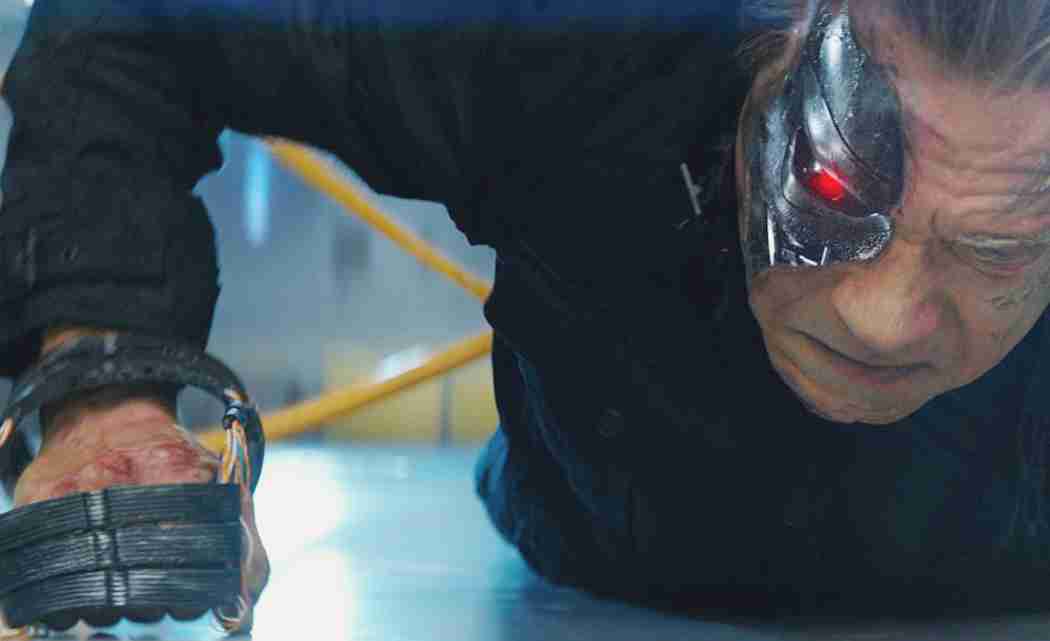By JAKE COYLE
AP Film Writer
It’s 31 years and counting, and the Terminators keep rolling off the assembly line like new iPhones, upgraded with shape-shifting abilities, rebooted Sarah Conner assassination levels and, one presumes, better selfie cameras.
Terminator Genisys, directed by Alan Taylor (Thor: The Dark World), is the fifth entry in the series begun by James Cameron and a naked money grab aimed at rejuvenating a flagging franchise. The three-plus decades of Terminator have spread across the relentless march of technology and the Internet, but the movies are curiously stuck between their pre-digital 1980s origins and a dystopian vision of machines’ rule over the planet.
However many Terminators are unveiled, the mechanical heart and soul of the series will always be Arnold Schwarzenegger’s T-800. He’s the android version of earlier, cast-aside operating systems: a Game Boy with a gun. “I’m old, not obsolete,” he says in Genisys.
And that, surprisingly, is the case. Schwarzenegger’s return to his most iconic role (he was absent in the forgettable 2009 entry Terminator Salvation while governor) provides much of the appeal of this otherwise purposeless redo.
Not only does his leather jacket-clad hulk continually best newer, better Terminators, in Genisys the 67-year-old successfully wrestles a synthetic version of his younger, body-building self. Aging is a hard fact of life, even for the machines sent from the future to kill us.
Five films in, Genisys works very hard to explain its existence. Screenwriters Laeta Kalogridis and Patrick Lussier begin in 2029, long after Skynet robots destroyed most of humanity in Judgment Day. John Conner (Jason Clarke) is leading a promising if grim revolution when the fight begins hopping through time.
To rescue John’s mother, Sarah Conner, John sends his loyal soldier Kyle Reese (Jai Courtney) to 1984. But the machines are aware of the plot, and after Reese lands with a thud in a Los Angeles back alley, the
familiar T-1000 of Terminator 2 (he of liquid metal, played here by Byung-hun Lee) is just around the corner.
Sarah (Emilia Clarke) is more the one doing the rescuing, though. With Schwarzenegger’s Terminator in tow (“Pops” she calls her longtime cyborg protector), she informs Reese of a very different mission than the one he was expecting.
An alternate timeline, caused by the crisscrossing time travel, is offered up for why many of the events of previous Terminator films — often in the same locations, with the same catch phrases — are repeated. It makes for a cautionary tale: Hand reboot-crazy Hollywood a plot device like a time machine and the most advisable course of action is to run for cover.
The movies may be acquiring another potentially dangerous tool: the means to clone. Terminator Genisys may well be most remembered for the digital cameo of a young Schwarzenegger. Granted, monosyllabic blocks of wood are likely easier to photocopy than other actors. But the digital rendering is nevertheless impressive.
Sarah, Reese and the T-800 travel ahead to 2017 to prevent Judgment Day, postponed (through a great deal of illogical, belabored description) from its original 1997 date. The film tries to claw its way into the present, and, hopefully, into a future trilogy.
Linda Hamilton devotees will likely never accept another in the role. But Clarke, the ascendant dragon mother of Game of Thrones, gives the film enough grit and a touch of depth.
But as Taylor leads the movie from set piece to set piece, the time-traveling thread of Terminator begins to unravel and its welcome playful tone (Genisys is often enjoyably ludicrous) bleeds into ill-advised self-parody.
The Terminator films are about a ceaseless, impossible quest to close the Pandora’s box of technology before it ruins us. But Genisys is too busy remixing franchise favorites and setting up further sequels to devote much attention to the sci-fi anxieties that spurred it in the first place. As Alex Garland’s recent Ex Machina showed, those are questions worth rebooting.













No Comment